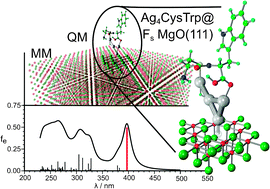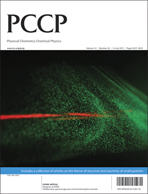Theoretical study of structural and optical properties of noble metal cluster–dipeptide hybrids at defect centers of MgO
Abstract
We present the theoretical investigation of structural and optical properties of silver and gold cluster–

- This article is part of the themed collection: Structure and reactivity of small particles: from clusters to aerosols

 Please wait while we load your content...
Please wait while we load your content...